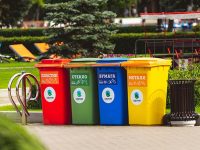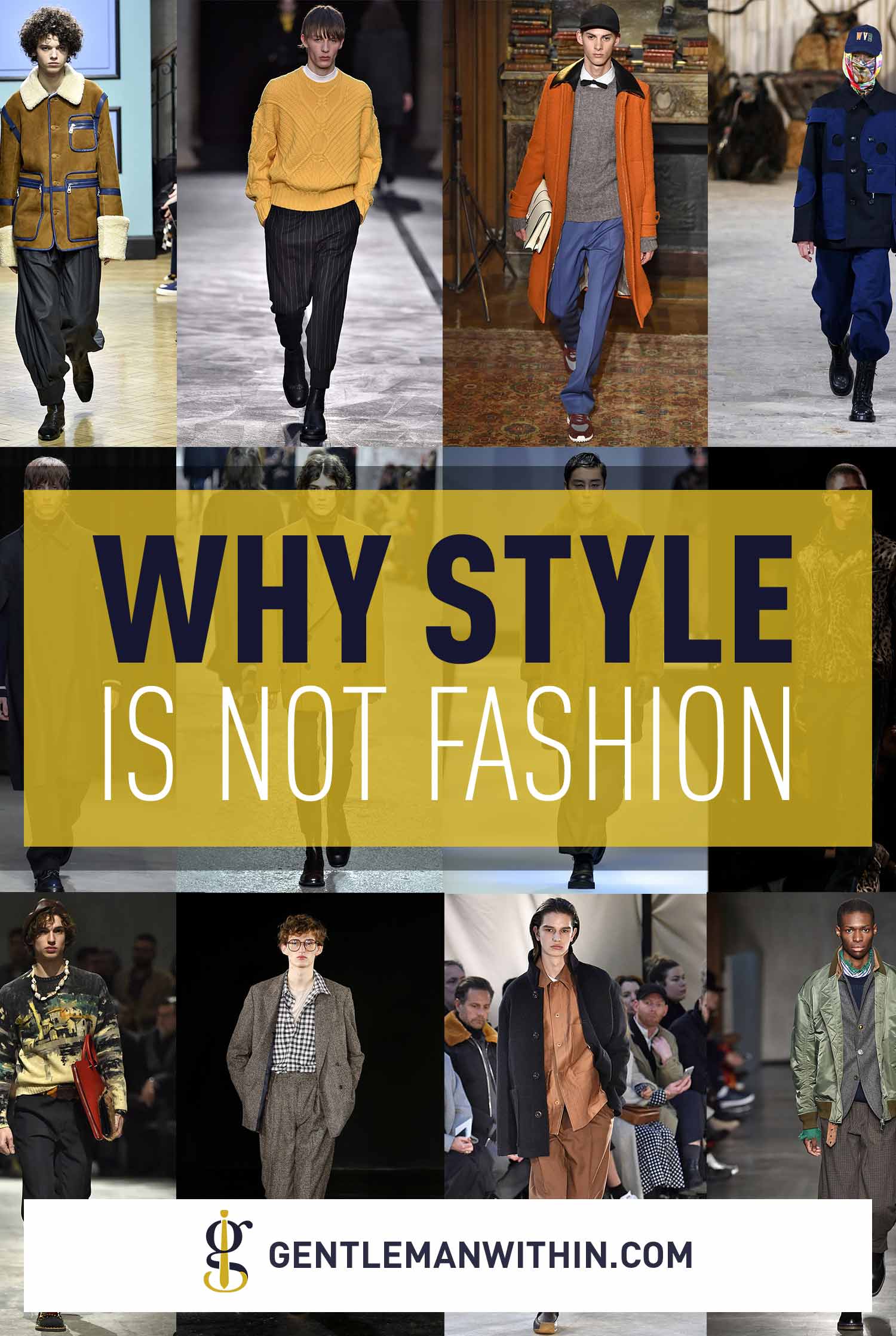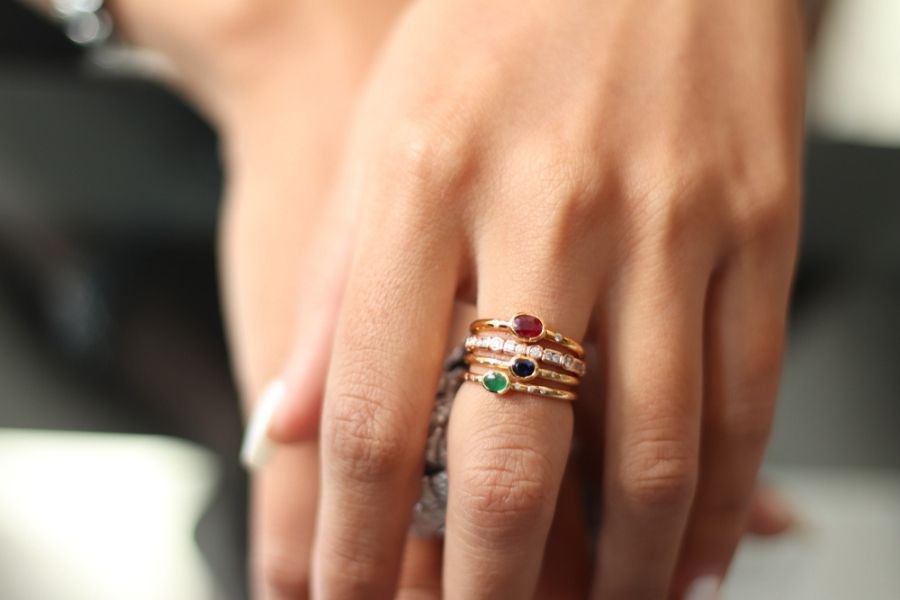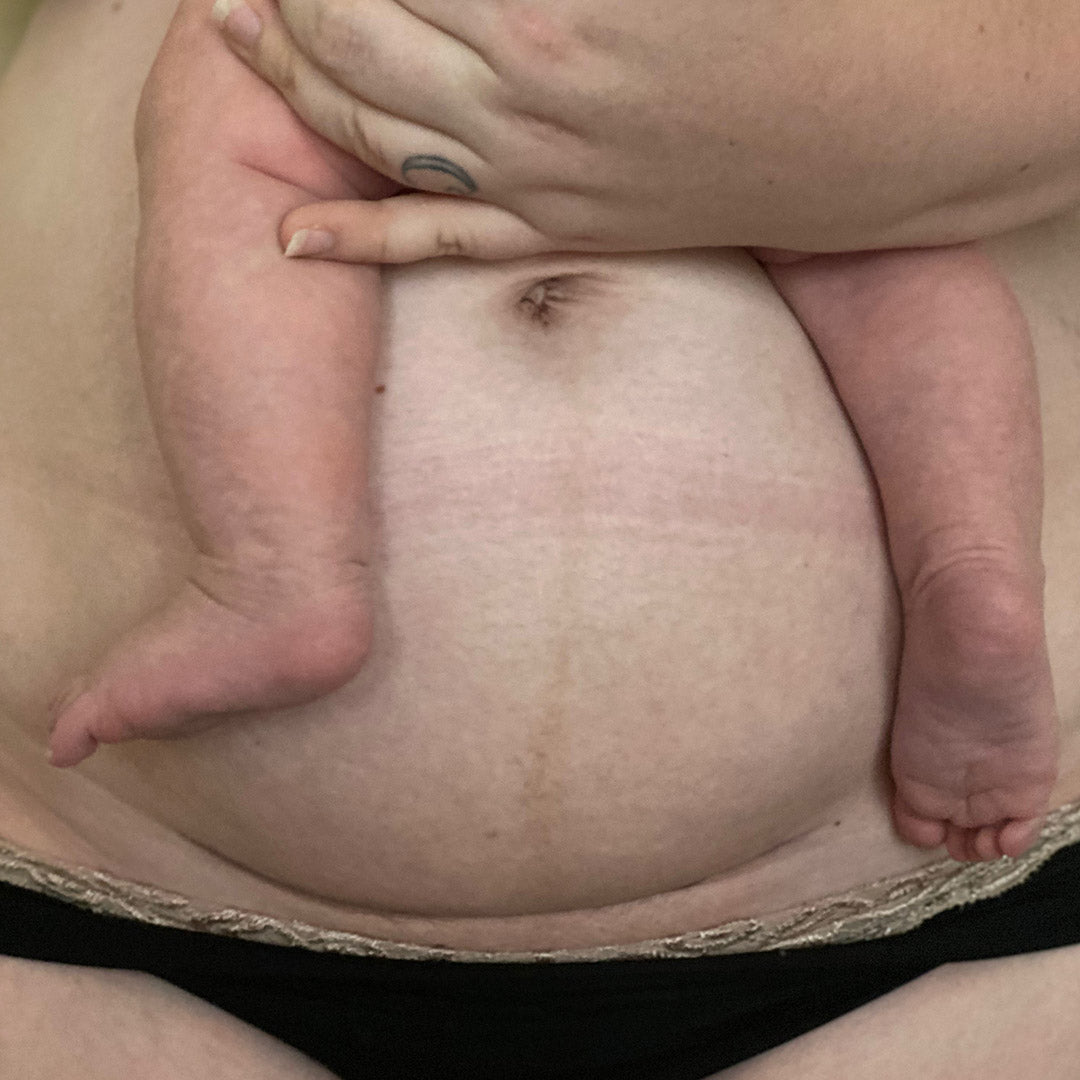
 From the SeriesSustainable Residing
From the SeriesSustainable Residing
Why Trend Must Be Extra Sustainable
The pandemic slowed quick trend to a standstill. Now because the world opens up and we’re socializing and going locations, we need to costume up once more. However after residing a confined and less complicated life throughout COVID, it is a good time to take inventory of the implications of how we costume. Trend, and particularly quick trend, has monumental environmental impacts on our planet, in addition to social ones.
Because the 2000s, trend manufacturing has doubled and it’ll possible triple by 2050, in line with the American Chemical Society. The manufacturing of polyester, used for a lot low-cost quick trend, in addition to athleisure put on, has elevated nine-fold within the final 50 years. As a result of clothes has gotten so low-cost, it’s simply discarded after being worn just a few occasions. One survey discovered that 20 % of clothes within the US isn’t worn; within the UK, it’s 50 %. On-line procuring, out there day and night time, has made impulse shopping for and returning objects simpler.
Based on McKinsey, common shoppers purchase 60 % greater than they did in 2000, and hold it half as lengthy. And in 2017, it was estimated that 41 % of younger girls felt the necessity to put on one thing totally different every time they left the home. In response, there are corporations that ship shoppers a field of recent garments each month.
Trend’s environmental impacts
Trend is answerable for 10 % of human-caused greenhouse gasoline emissions and 20 % of world wastewater, and makes use of extra vitality than the aviation and delivery sectors mixed.
Impacts on water
World trend additionally consumes 93 billion metric tons of unpolluted water every year, about half of what Individuals drink yearly.
Cotton is an particularly thirsty crop. For instance, one kilogram of cotton used to supply a pair of denims can eat 7,500 to 10,000 liters of water—the quantity an individual would drink over 10 years. Cotton manufacturing additionally requires pesticides and pesticides, which pollute the soil; runoff from fertilized cotton fields carry the surplus vitamins to water our bodies, inflicting eutrophication and algal blooms.
The dyeing course of for materials, which makes use of poisonous chemical compounds, is answerable for 17 to twenty % of world industrial water air pollution.
Seventy-two poisonous chemical compounds have been discovered within the water utilized in textile dyeing.
Contributions to local weather change
To feed the style business’s want for wooden pulp to make materials like rayon, viscose and different materials, 70 million tons of bushes are reduce down every year. That quantity is predicted to double by 2034, rushing deforestation in a number of the world’s endangered forests.
The style business produces 1.2 million metric tons of CO2 every year, in line with a MacArthur Basis research. In 2018, it resulted in additional greenhouse gasoline emissions than the carbon produced by France, Germany and the UK all collectively. Polyester, which is definitely plastic constituted of fossil fuels, is used for about 65 % of all clothes, and consumes 70 million barrels of oil every year. As well as, the style business makes use of giant quantities of fossil fuel-based plastic for packaging and hangers.
Waste
Lower than one % of clothes is recycled to make new garments. The fibers in clothes are polymers, lengthy chains of chemically linked molecules. Washing and sporting clothes shorten and weaken these polymers, so by the point a garment is discarded, the polymers are too brief to show into a robust new cloth. As well as, most of right this moment’s textile-to-textile recycling applied sciences can’t separate out dyes, contaminants, or perhaps a mixture of materials corresponding to polyester and cotton.
In consequence, 53 million metric tons of discarded clothes are incinerated or go to landfills every year. In 2017, Burberry burned $37 million price of unsold luggage, garments and fragrance. If despatched to a landfill, garments constituted of pure materials like cotton and linen could degrade in weeks to months, however artificial materials can take as much as 200 years to interrupt down. And as they do, they produce methane, a strong international warming greenhouse gasoline.
Microplastic air pollution
Many individuals have lived solely in athleisure put on throughout the pandemic, however the issue with that is that the stretch and breathability in most athleisure comes from the usage of artificial plastic fibers like polyester, nylon, acrylic, spandex and others, that are manufactured from plastic.
When garments constituted of synthetics are washed, microplastics from their fibers are shed into the wastewater. A few of it’s filtered out at wastewater therapy crops together with human waste and the ensuing sludge is used as fertilizer for agriculture. Microplastics then enter the soil and develop into a part of the meals chain. The microplastics that elude the therapy plant find yourself in rivers and oceans, and within the ambiance when seawater droplets carry them into the air. It’s estimated that 35 % of the microplastics within the ocean come from the style business. Whereas some manufacturers use “recycled polyester” from PET bottles, which emits 50 to 25 % fewer emissions than virgin polyester, efficient polyester recycling is proscribed, so after use, these clothes nonetheless normally find yourself within the landfill the place they will shed microfibers.
Microplastics hurt marine life, in addition to birds and turtles. They’ve already been present in our meals, water and air—one research discovered that Individuals eat 74,000 microplastic particles every year. And whereas there’s rising concern about this, the dangers to human well being are nonetheless not properly understood.
Trend’s social impacts
As a result of it have to be low-cost, quick trend depends on the exploited labor power in creating international locations the place laws are lax. Employees are underpaid, overworked, and uncovered to harmful situations or well being hazards; many are underage.
Of the 75 million manufacturing facility staff around the globe, it’s estimated that solely two % earn a residing wage. To maintain manufacturers from shifting to a different nation or area with decrease prices, factories restrict wages and are disinclined to spend cash to enhance working situations. Furthermore, staff typically reside in areas with waterways polluted by the chemical compounds from textile dyeing.
How can trend be extra sustainable?
Versus our present linear mannequin of trend manufacturing with environmental impacts at each stage, the place assets are consumed, become a product, then discarded, sustainable trend minimizes its environmental influence, and even goals to profit the surroundings. The purpose is a round trend business the place waste and air pollution are eradicated, and supplies are used for so long as attainable, then reused for brand new merchandise to keep away from the necessity to exploit virgin assets.
Many designers, manufacturers, and scientists — together with college students in Columbia College’s Environmental Science and Coverage program— are exploring methods to make trend extra sustainable and round.
Much less waste
Since 80 to 90 % of the sustainability of a clothes merchandise is decided by selections made throughout its design stage, new methods can get rid of waste from the get-go.
To eradicate the 15 % of a cloth that normally finally ends up on the reducing room ground within the making of a garment, zero waste sample reducing is used to rearrange sample items on cloth like a Tetris puzzle.
Designer YeohLee is called a zero waste pioneer, using geometric ideas with the intention to use each inch of material; she additionally creates clothes with the leftovers of different items. Draping and knitting are additionally strategies of designing with out waste.
3D digital sampling can eradicate the necessity for bodily samples of fabric. A completed garment can generally require as much as 20 samples. The Fabricant, a digital trend home, replaces precise clothes with digital samples within the design and improvement stage and claims this may scale back a model’s carbon footprint by 30 %.
Some clothes might be designed to be taken aside on the finish of its life; designing for disassembly makes it simpler for the components to be recycled or upcycled into one other garment. To be multifunctional, different clothes are reversible, or designed in order that components might be subtracted or added. London-based model Petit Pli makes youngsters’s clothes from a single recycled cloth, making it simpler to recycle; and the clothes incorporate pleats that stretch so that youngsters can proceed to put on them as they develop.
3D printing can be utilized to work out particulars digitally earlier than manufacturing, minimizing trial and error; and since it may well produce custom-fit clothes on demand, it reduces waste. As well as, recycled supplies corresponding to plastic and steel might be 3D printed.
Sustainable designer Iris Ven Herpen is understood for her fabulous 3D printed creations, some utilizing upcycled marine particles; she can also be presently working with scientists to develop sustainable textiles.
DyeCoo, a Dutch firm, has developed a dyeing method that makes use of waste CO2 instead of water and chemical compounds. The expertise pressurizes CO2 in order that it turns into supercritical and permits dye to readily dissolve, so it may well enter simply into materials. Because the course of makes use of no water, it produces no wastewater, and requires no drying time as a result of the dyed cloth comes out dry. Ninety-five % of the CO2 is recaptured and reused, so the method is a closed-loop system.
Heuritech, a French startup, is utilizing synthetic intelligence to research product photographs from Instagram and Weibo and predict tendencies. Adidas, Lee, Wrangler and different manufacturers have used it to anticipate future demand and plan their manufacturing accordingly to scale back waste.
Cell physique scanning might help manufacturers produce clothes that match quite a lot of physique varieties as a substitute of utilizing customary sizes. 3D expertise can also be getting used for digital dressing, which is able to allow shoppers to see how a garment appears to be like on them earlier than they buy it. These improvements may result in fewer returns of clothes.
One other option to scale back waste is to eradicate stock. On-demand product achievement corporations like Printful allow designers to sync their {custom} designs to the corporate’s clothes merchandise. Clothes usually are not created till an order is available in.
For Days, a closed-loop system, provides swap credit for each article of clothes you purchase; clients can use swap credit to get new clothes objects, all constituted of natural cotton or recycled supplies. The swap credit encourage shoppers to ship in undesirable For Days garments, hold them out of the landfill, and permit them to be made into new supplies. Clients can even earn swap credit by filling one of many firm’s Take Again luggage with any previous garments, in any situation, and sending it in; these are then resold if salvageable or recycled as rags.
However maybe the least wasteful technique permits shoppers to not purchase any garments in any respect. If they’re primarily involved about their picture on social media, they will use digital clothes that’s superimposed over their picture. The Fabricant, which creates these digital clothes, goals to make “self expression by digital clothes a sustainable option to discover private identification.”
Higher supplies
Many manufacturers are utilizing textiles constituted of pure supplies corresponding to hemp, ramie or bamboo as a substitute of cotton. Bamboo has been touted as a sustainable cloth as a result of it’s fast-growing and doesn’t require a lot water or pesticides; nevertheless, some previous progress forests are being reduce right down to make manner for bamboo plantations. Furthermore, to make most bamboo materials comfortable, they’re subjected to chemical processing whose toxins can hurt the surroundings and human well being.
Due to this processing, the World Natural Textile Commonplace says that the majority bamboo fiber can “not be thought of as pure and even natural fibre, even when the bamboo plant was licensed natural on the sector.”
Some designers are turning to natural cotton, which is grown with out poisonous chemical compounds. However as a result of natural cotton yields are 30 % lower than standard cotton, they want 30 % extra water and land to supply the identical quantity as standard cotton. Different manufacturers, corresponding to North Face and Patagonia, are creating clothes constituted of regenerative cotton—cotton grown with out pesticides, fertilizers, weed pulling or tilling, and with cowl crops and numerous crops to boost the soil.
Textiles are additionally being made with fibers from agriculture waste, corresponding to leaves and rinds. Orange Fiber, an Italian firm, is utilizing nanotechnology to make a sustainable silky materials by processing the cellulose of oranges. H&M is utilizing cupro, a fabric constituted of cotton waste. Flocus makes absolutely biodegradable and recyclable yarns and materials from the fibers of kapok tree pods by a course of that doesn’t hurt the bushes. Kapok bushes can develop in poor soils with out a lot want for water or pesticides.
In 2016, Theanne Schiros, a principal investigator at Columbia College’s Supplies Analysis Science and Engineering Heart and assistant professor on the Trend Institute of Know-how (FIT), mentored a gaggle of FIT college students who created a bio-design award-winning materials from algae. Kelp, its important ingredient, is quick rising, absorbs CO2 and nitrogen from agricultural runoff, and helps enhance biodiversity. With the assistance of Columbia College’s Helen Lu, a biomedical engineer, the workforce created a bio-yarn they referred to as AlgiKnit. Having acquired over $2 million in preliminary seed funding, the start-up, primarily based in Brooklyn, is scaling up for market entry.
Schiros and Lu additionally developed a microbial bioleather. The compostable materials consists of a nanocellulose mesh made by a fermentation course of utilizing a tradition of micro organism and yeast. Schiros defined that these micro organism produce cellulose nanofibers as a part of their metabolism; the micro organism had been used within the fermentation of kombucha as early as 220 BC in what was Manchuria and in vinegar fermentation as early as 5,000 BC in Egypt. Biofabrication of the fabric is 10,000 occasions much less poisonous to people than chrome-tanned leather-based, with an 88 to 97 % smaller carbon footprint than artificial (polyurethane) leather-based or different plastic-based leather-based alternate options. The fabrication course of additionally drew on historical textile methods for tanning and dyeing. Schiros labored with the designers of Public College NY on Gradual Manufacturing facility’s One x One Acutely aware Design Initiative problem to create zero-waste, naturally dyed sneakers from the fabric.
Schiros can also be co-founder and CEO of the startup Werewool, one other collaboration with Lu, and with Allie Obermeyer of Columbia College Chemical Engineering. Werewool, which was acknowledged by the 2020 World Change Award, creates biodegradable textiles with coloration and different attributes present in nature utilizing artificial biology. “Nature has developed a genetic code to make proteins that do issues like have vivid coloration, stretch, moisture administration, wicking, UV safety—all of the issues that you just actually need for efficiency textiles, however that presently come at a very excessive environmental value,” mentioned Schiros. “However nature accomplishes all this and that’s attributed to microscopic protein buildings.”
Werewool engineers proteins impressed by these present in coral, jellyfish, oysters, and cow milk that lead to coloration, moisture administration or stretch. The DNA code for these proteins is inserted into micro organism, which ferment and mass-produce the protein that then turns into the idea for a fiber. The corporate will ultimately present its expertise and fibers to different corporations all through the availability chain and can possible start with restricted version designer manufacturers.
Higher working situations
There are corporations now intent on bettering working situations for textile staff. Dorsu in Cambodia creates clothes from cloth discarded by garment factories. Employees are paid a residing wage, have contracts, are given breaks, and likewise get bonuses, extra time pay, insurance coverage and paid go away for illness and holidays.
Mayamiko is a one hundred pc PETA-certified vegan model that advocates for labor rights and created the Mayamiko Belief to coach deprived girls.
Employees who make Ethcs’ PETA-certified vegan clothes are protected beneath the Truthful Put on Basis, which ensures a good residing wage, protected working situations and authorized labor contracts for staff. The Truthful Put on Basis web site lists 128 manufacturers it really works with.
Past sustainability
Schiros maintains that making supplies in collaboration with conventional artisans and Indigenous communities can produce outcomes that tackle environmental, social and financial sides of sustainability. She led a collection of pure dye workshops with girls tie dyers in Kindia, Guinea, and artisans in Grand-Bassam, Côte d’Ivoire, and collaborated with New York designers to make a zero-waste assortment from the materials created. The undertaking related FIT college and college students to over 300 artisans in West Africa to create fashions for inclusive, sustainable improvement by textile arts, schooling, and entrepreneurship.
Partnering with frontline communities which might be defending, for instance, the Amazon rainforest, does greater than merely maintain—it protects biodiversity and areas which might be sequestering carbon. “So with excessive worth merchandise that incorporate truthful commerce and clear partnerships into the availability chain, you not solely have pure, biodegradable supplies, however you have got the added bonus of all that biodiversity that these communities are defending,” she mentioned. “Indigenous communities are 5 % of the worldwide inhabitants, and so they’re defending 80 % of the biodiversity on the planet…Integrating how we make our supplies, our methods and the communities which might be sequestering carbon whereas defending biodiversity is critically essential.”
The necessity for transparency
With a view to guarantee trend’s sustainability and obtain a round trend business, it have to be attainable to trace all the weather of a product from the supplies used, chemical compounds added, manufacturing practices, and product use, to the top of life, in addition to the social and environmental situations beneath which it was made.
Blockchain expertise can do that by recording every section of a garment’s life in a decentralized tamper-proof widespread ledger. Designer Martine Jarlgaard partnered with blockchain tech firm Provenance to create QR codes that, when scanned, present the garment’s complete historical past. The software program platform Eon has additionally developed a option to give every garment its personal digital fingerprint referred to as Round ID. It makes use of a digital identifier embedded within the clothes that allows it to be traced for its complete lifecycle.
Transparency can also be essential as a result of it permits shoppers to determine greenwashing after they encounter it. Greenwashing is when corporations deliberately deceive shoppers or oversell their efforts to be sustainable.
Amendi, a sustainable trend model specializing in transparency and traceability, co-founded by Columbia College alumnus Corey Spencer, has begun a marketing campaign to get the Federal Commerce Fee to replace its Inexperienced Guides, which define the ideas for the usage of inexperienced claims. When the newest variations of the Inexperienced Guides had been launched in 2012, they didn’t scrutinize the usage of “sustainability” and “natural” in advertising. Using these phrases has exploded since then and until regulated, may develop into meaningless or deceptive.
What shoppers can do
The important thing to creating trend sustainable is the buyer. If we would like the style business to undertake extra sustainable practices, then as buyers, we have to care about how clothes is made and the place it comes from, and display these issues by what we purchase. The market will then reply.
We are able to additionally scale back waste by how we look after our clothes and the way we discard it.
Listed here are some tips about the right way to be a accountable shopper:
- Purchase solely what you want
- Purchase from sustainable manufacturers with clear provide chains
- Search for sustainable certification from the Fairtrade Basis, World Natural Textiles Commonplace, Soil Affiliation, and Truthful Put on Basis
- Test the Trend Transparency Index to see how an organization ranks in transparency.
- Learn to store for high quality and spend money on higher-quality clothes
- Select pure fibers and single fiber clothes
- Put on clothes for longer
- Deal with clothes: wash objects much less typically, restore them so that they final. Patagonia operates Worn Put on, a recycling and restore program.
- Upcycle your undesirable garments into one thing new
- Purchase secondhand or classic; promote your previous garments at Thred Up, Poshmark, or the Actual Actual.
- When discarding, move clothes on to somebody who will put on it, or to a thrift store
- Lease clothes from Lease the Runway, Armoire or Nuuly
“I believe the very best piece of clothes is the one which already exists. The most effective cloth is the material that already exists,” mentioned Schiros. “Maintaining issues within the provide chain in as many loops and cycles as you’ll be able to is de facto, actually essential.”




